Sathyamangalam National Park, located in the Erode district of Tamil Nadu, is one of India’s most vital biodiversity hotspots. Spanning over 1,400 square kilometres, this national park is home to a wide range of wildlife, including tigers, elephants, leopards, and various species of deer and birds. The park’s rich flora and fauna attract wildlife enthusiasts, nature lovers, and trekkers. It plays a significant role in wildlife conservation, particularly for the endangered Indian elephant and Bengal tiger populations. Whether you’re an avid birdwatcher or a wildlife photographer, Sathyamangalam National Park promises a rewarding experience.
Sathyamangalam National Park Location
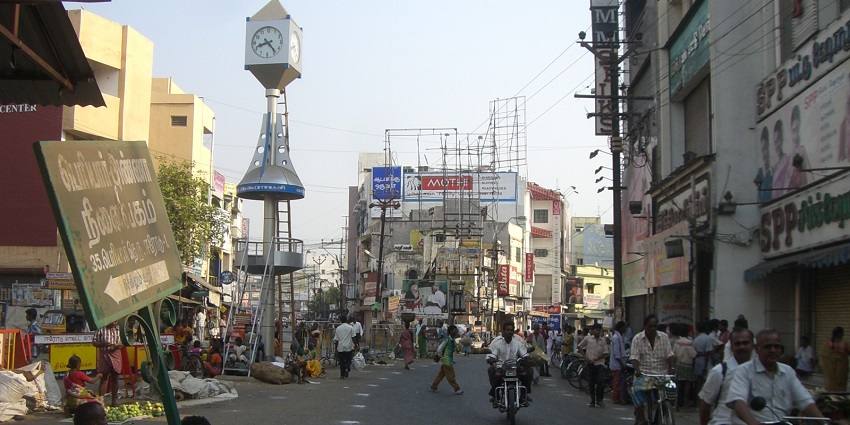
Photo: Frank Hebbert / Wikimedia Commons
Sathyamangalam National Park is located in the Erode district of Tamil Nadu, on the border between the southern states of Tamil Nadu and Karnataka. Nestled within the Western Ghats, the park is situated along the eastern slopes of the Nilgiri Hills, a part of the Nilgiri Biosphere Reserve. The park’s strategic location between Tamil Nadu and Karnataka makes it a significant wildlife corridor, connecting the Nilgiri Hills with the Eastern Ghats. This geographical setting ensures diverse habitats supporting various ecosystems, from dry deciduous forests to moist semi-evergreen areas.
Suggested Read: Vallanadu Wildlife Sanctuary
How To Reach Sathyamangalam National Park
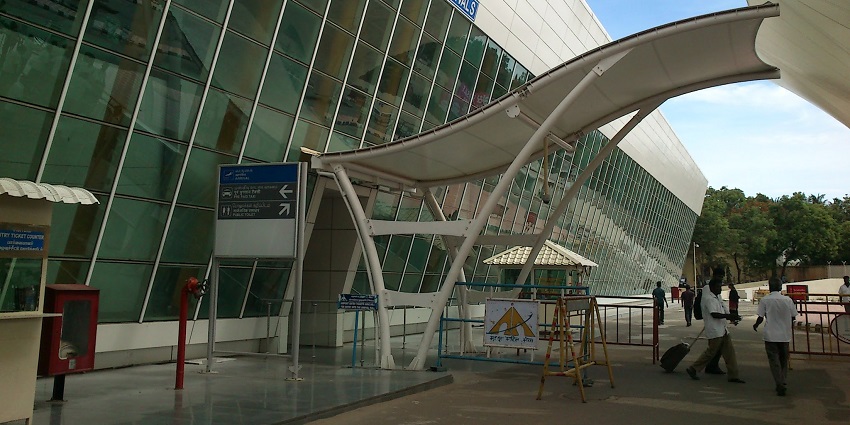
Photo: Faheem9333 / Wikimedia Commons
By Air: The nearest airport is Coimbatore International Airport, located around 120 kilometres from the park. Taxis and rental cars are available at the airport to reach Sathyamangalam.
By Train: The closest railway station is Erode Junction, about 65 kilometres away. From Erode, you can hire a taxi or take a bus to the park.
By Road: Sathyamangalam National Park is well-connected by road. You can take a bus or drive from nearby towns like Coimbatore or Bangalore (180 kilometres away), with roads leading up to the park entrance.
Places To Visit In And Around Sathyamangalam National Park
Here are some exciting places to visit within and around Sathyamangalam National Park, offering visitors an opportunity to explore the surrounding beauty and wildlife:
1. Bhavani Sagar Dam
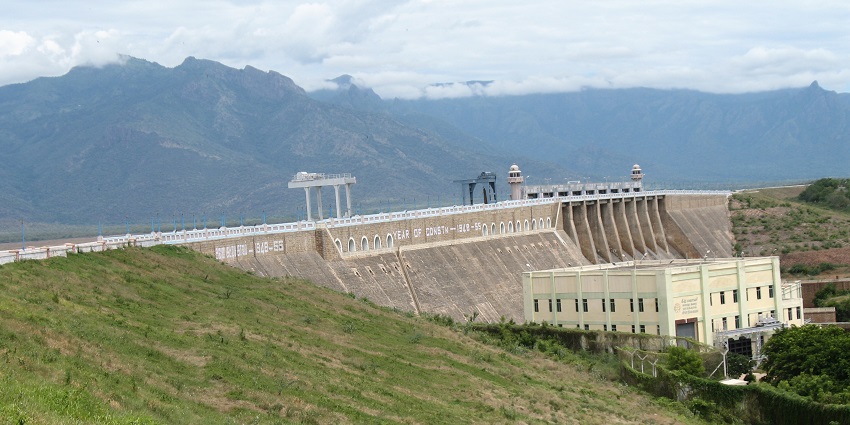
Photo: Jeganila / Wikimedia Commons
Bhavani Sagar Dam is a popular destination near Sathyamangalam National Park. The dam is constructed on the Bhavani River and serves as a primary source of irrigation for nearby agricultural fields. The reservoir created by the dam is also a popular spot for picnics and family outings. Visitors can enjoy views of the surrounding landscape, and the calm waters offer a peaceful environment. The park around the dam is well-maintained, making it a relaxing place to spend a few hours.
Location: 35 kilometres from Sathyamangalam
Timings: 9 AM – 5 PM
Entry Fee: No entry fee
Suggested Read: Adventure Sports In Chennai
2. Bannari Amman Temple
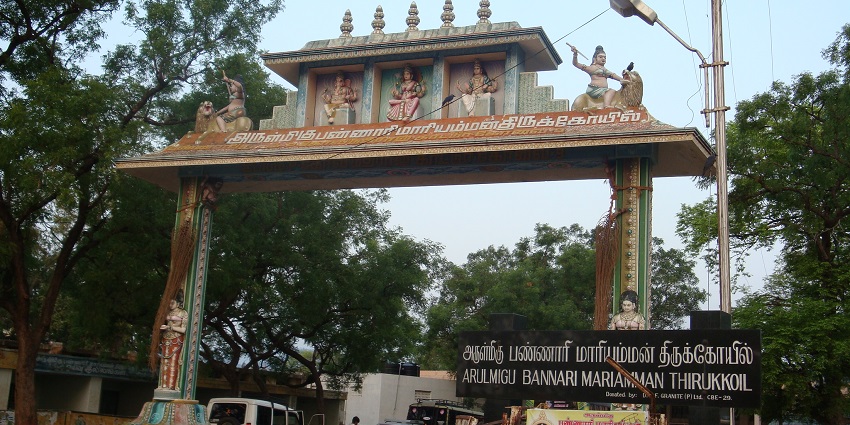
Photo: Krishnaeee (talk) / Wikimedia Commons
Bannari Amman Temple is amongst the best places to see near Sathyamangalam National Park for nature enthusiasts and wildlife lovers. It is located at the foothills of the Western Ghats near Sathyamangalam. Dedicated to Goddess Bannari Amman, the temple attracts devotees from all over the region. The temple’s history dates back centuries and holds immense spiritual significance for locals. It is located near the forest area for a mystical aura.
Location: 15 kilometres from Sathyamangalam
Timings: 5:30 AM – 8:30 PM
Entry Fee: No entry fee
3. Hogenakkal Falls
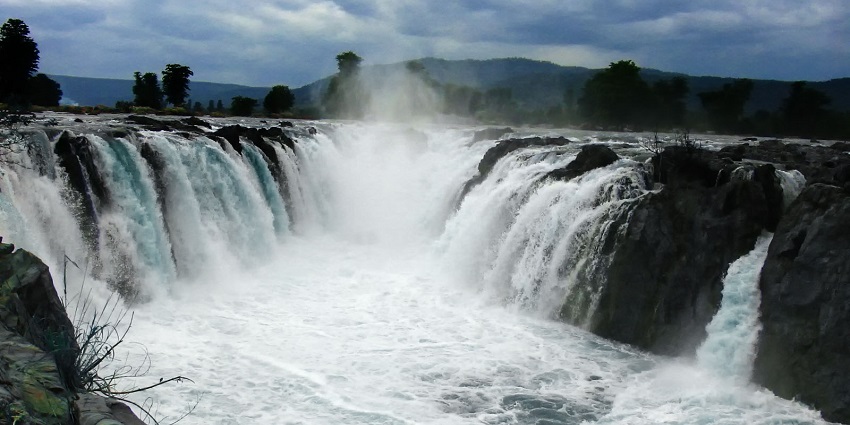
Photo: Mithun Kundu / Wikimedia Commons
Hogenakkal Falls is a spectacular waterfall located on the Kaveri River. The falls are known for their dramatic drops and the unique coracle boat rides offered at the site. Visitors can enjoy boat rides close to the falls, providing a thrilling experience as the water roars into the gorge below. The surrounding landscape is rugged and beautiful, making it the most popular tourist attraction near Sathyamangalam National Park. The falls are also known for their medicinal properties, as the water flows through forests rich in herbs and plants.
Location: 80 kilometres from Sathyamangalam
Timings: 6 AM – 6 PM
Entry Fee: ₹20 per person (Boating charges extra)
Suggested Read: Places To Visit In Mettupalayam
4. Mudumalai National Park
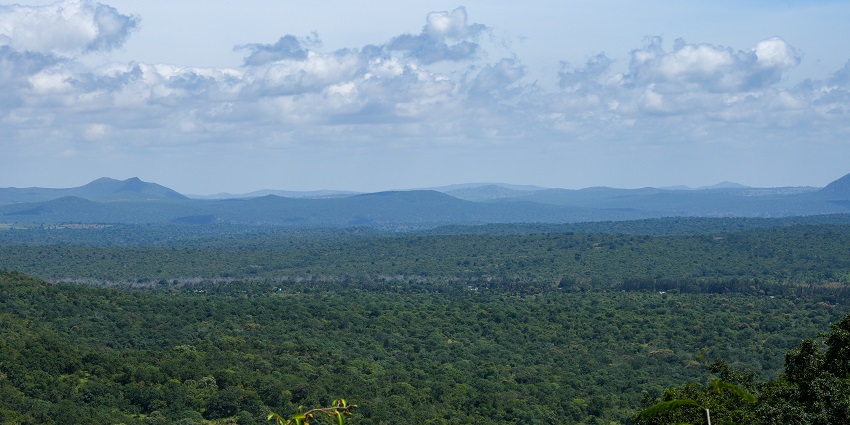
Photo: Timothy A. Gonsalves / Wikimedia Commons
Mudumalai National Park, located near the Nilgiri Hills, is a well-known wildlife reserve and part of the Nilgiri Biosphere Reserve. The park has various endangered species, including tigers, elephants, and leopards. It is a significant conservation area, offering safaris and guided treks to visitors. The park is also a hotspot for birdwatchers, with over 200 species of birds recorded. Safari tours in Mudumalai allow visitors to explore the park’s diverse habitats, ranging from dry deciduous forests to moist evergreen areas.
Location: 120 kilometres from Sathyamangalam
Timings: 6 AM – 6 PM
Entry Fee: ₹50 per person (Safari charges extra)
5. Biligiri Rangaswamy Temple Wildlife Sanctuary

Photo: Dineshkannambadi / Wikimedia Commons
Biligiri Rangaswamy Temple Wildlife Sanctuary, commonly known as BRT Wildlife Sanctuary, is located at the confluence of the Eastern and Western Ghats. The sanctuary is known for its diverse ecosystems, which range from scrub forests to grasslands and tropical dry forests. The refuge is home to several species of mammals, including the tiger, elephant, and sloth bear. Visitors can embark on guided safaris or treks to explore the sanctuary’s rich biodiversity.
Location: 150 kilometres from Sathyamangalam
Timings: 6 AM – 6 PM
Entry Fee: ₹100 per person (Additional charges for safaris)
Suggested Read: Hill Stations Near Tiruvannamalai
Where To Stay

Photo: Pexels / Pixabay / Image For Representation Only
There are limited stay options within the park, but several nearby towns, such as Sathyamangalam, Pollachi, and Coimbatore, offer a variety of accommodations. For a more immersive experience, visitors can choose forest lodges managed by the Tamil Nadu Forest Department. These lodges are basic but comfortable, offering an opportunity to stay close to nature. Guest houses and eco-lodges are also available, with some offering guided safaris, trekking tours, and wildlife-watching expeditions. It’s advisable to book accommodations in advance, especially during peak tourist seasons.
Where To Eat

Photo: Pexels / Pixabay / Image For Representation Only
Most of the restaurants near Sathyamangalam National Park serve traditional South Indian meals. Local eateries offer a variety of dishes, including dosa, idli, vada, and sambar, and rice-based meals with curries and chutneys. Pollachi and nearby towns have small hotels and restaurants where visitors enjoy tasty meals from locally sourced ingredients. Some eco-lodges and forest guest houses also provide dining options, typically offering home-cooked meals with fresh produce.
Suggested Read: Thanthai Periyar Wildlife Sanctuary
Best Time To Visit
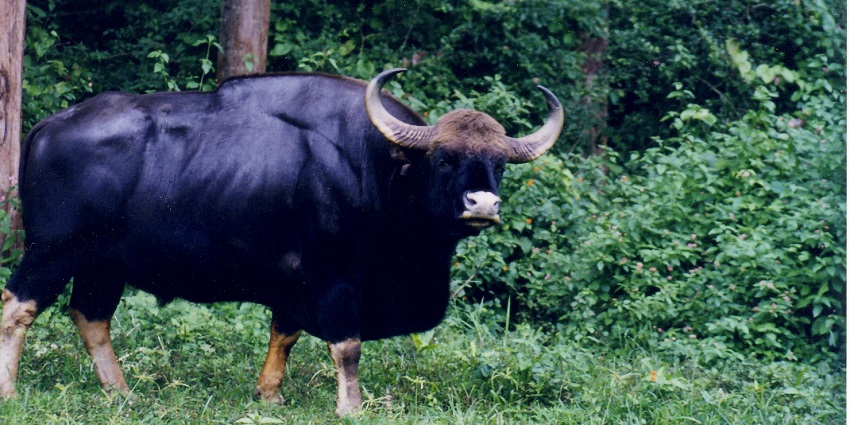
Photo: Dineshkannambadi / Wikimedia Commons / Image For Representation Only
The best time to visit Sathyamangalam National Park is between October and March. The weather is more relaxed during these months, making it perfect for wildlife viewing and trekking. The summer months, from April to June, can be pretty hot, with temperatures rising above 40°C, making outdoor activities uncomfortable. However, early morning safaris during this time can still offer good wildlife sightings. The monsoon season, from July to September, brings heavy rains, which can make certain areas inaccessible. The winter months are ideal for birdwatching and animal sightings.
Other Factors To Consider
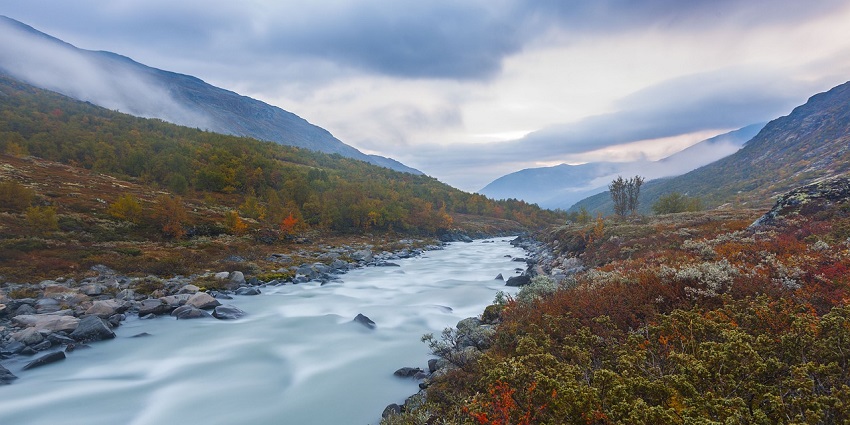
Photo: B_Zocholl / Pixabay / Image For Representation Only
Average Trip Cost To The Park:
A trip cost to Sathyamangalam National Park can vary depending on accommodation and activities. Budget travellers can expect to spend around ₹3,000 to ₹5,000 per day, which includes entry fees, accommodations in guest houses or lodges, and food. For those opting for more luxurious stays and private safaris, the cost can go up to ₹10,000 per day. Additional expenses such as transportation, guided safaris, and permits may also affect the overall budget.
Tips For Travellers:
- Carry essential items like water, snacks, and a first-aid kit.
- Wear comfortable clothing suitable for treks and safaris, along with sturdy shoes.
- Respect wildlife and avoid disturbing animals or their habitats.
- Don’t forget your camera to take magnificent Sathyamangalam National Park photos.
- Carry reusable bottles and bags to minimise waste.
Sathyamangalam National Park offers a fantastic opportunity for wildlife enthusiasts and nature lovers to explore a diverse ecosystem crucial for conserving many endangered species. With options for safaris, trekking, and visits to nearby attractions, it’s a perfect destination for a weekend getaway or a more extended wildlife adventure. Plan your trip with TripXL for a hassle-free and enriching experience in one of Tamil Nadu’s finest national parks.
Cover Photo: A. J. T. Johnsingh, WWF-India and NCF / Wikimedia Commons


 WhatsApp
WhatsApp
 Twitter
Twitter









